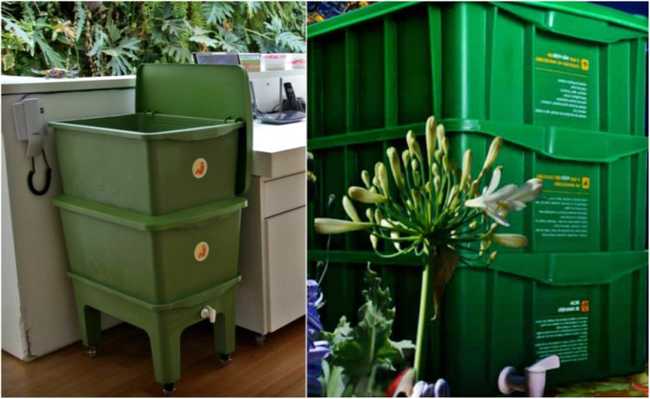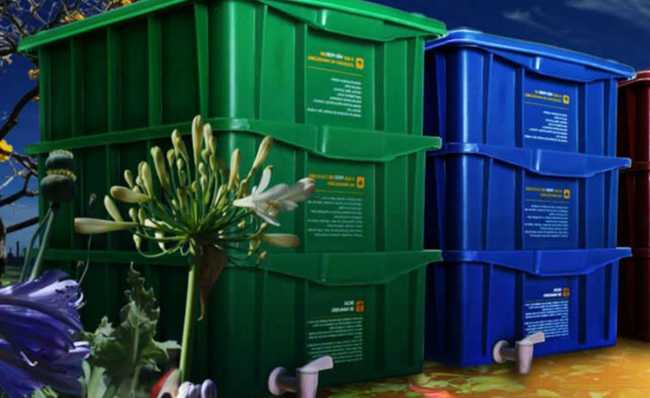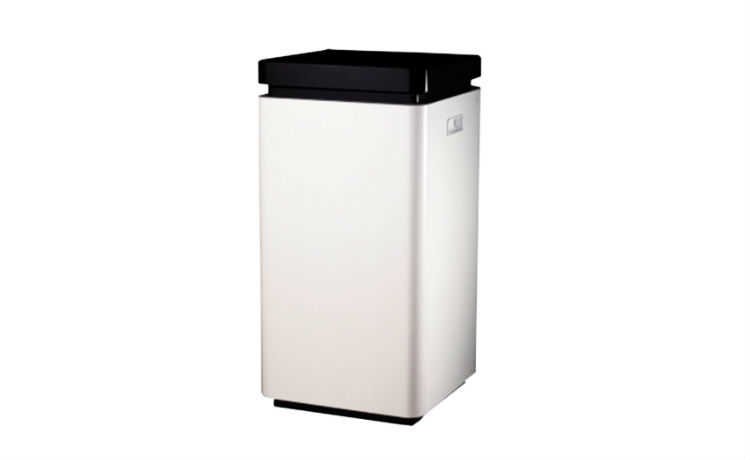Home composting: how to do it and benefits
Making home compost is easy, hygienic, reduces organic waste and greenhouse gas emissions

Image: disclosure/Address of the Forest
Knowing how to make compost at home is a great start to successfully managing a composter for your home, apartment or farm.
Composting domestic, homemade or residential works basically through the method of composting with worms (totally hygienic). This method, already used for many years by family farmers, is indicated as a solution for urban waste, as it transforms what would be garbage into a rich humus and, in addition to reducing the waste that would go to landfills and dumps, it also reduces the emission of greenhouse gases.
- Humus: what it is and what are its functions for the soil
Benefits of Home Composting
To give you an idea, according to data from the Institute for Applied Economic Research (Ipea), more than half of the production of garbage from Brazilian homes could be avoided and turned into fertilizer if everyone made compost at home. It would be possible to save a lot of space in landfills.Reduction of harmful gas emissions
In addition to reducing the amount of waste in landfills and dumps, reducing more than half the amount of waste, the advantage of composting at home is that it avoids the emission of gases that contribute to the imbalance of the greenhouse effect.
When waste ends up in landfills without any treatment, decomposition ends up generating methane gas (CH4), which is 25 times more harmful to the greenhouse effect than carbon dioxide (CO2). Composting, on the other hand, prevents the emission of CH4.
- What are greenhouse gases
What is home worm compost?
Vermicomposting is composting made with the help of the work of earthworms, in this case, the Californian earthworms. Understand more about them in the articles:
- How to raise Californian compost worms
- Earthworm: environmental importance in nature and at home
- Minhocarium: what it is for and how it works
The term “vermicomposting” is used to describe the process of biological transformation of waste into humus, or organic fertilizer, in which earthworms act as accelerators of the composting process.
The use of vermicompost or humus, the name given to the product generated by domestic composting, has been shown to be an efficient, relatively cheap and sustainable way to improve the quality and fertility of the soil, being essential for the maintenance of life as we know it. Understand more about humus in the article: "Humus: what it is and what are its functions for the soil".
Earthworms in domestic compost
Contrary to what many people think, earthworms are clean, do not transmit diseases, and can be used in your home without causing problems. Obtaining a home composter to raise worms is like caring for any pet, but with worms there is still the benefit of decomposing the waste.
- Interview: homemade compost is hygienic
Residential composting in urban centers
There are several types of composters available, for all tastes, budgets and family sizes, including urban ones.
A good alternative that can be used in your home or apartment is a lid and three or more stackable plastic boxes. The number of boxes and their size depends on the family demand, with the two at the top, the so-called digester boxes, with holes at the bottom (they are where all the "magic" happens and the holes are exclusively aimed at migration earthworms and liquid flow); there is also a collection box, the base, which serves to store the slurry produced in the process. It is a practical and simple method of making domestic composting of organic waste. Understand this process better in the article: "Guide: how is composting done?".
This type of composter has two main modalities, the conventional model and the humi model.
Conventional domestic composter model

Image: disclosure/Address of the Forest
Humi homemade composter model

Image: disclosure/Address of the Forest
How to make compost at home
In these modalities (conventional and humi), the first two compost bins are used for deposition of organic waste. With an initial portion of about 200 earthworms, depending on the amount of food available and space, earthworms manage to self-regulate their population. In the top box, the user must add leftover food, such as vegetable and fruit peels, avoiding placing foods with too much fat, dairy products, fish spines, bones, excess citrus fruits (which in large quantities can change the pH and acidify compost - bad for earthworms and plants), meat and seafood. To know what can and cannot go in the compost bin, take a look at the article "How to feed the worms in the compost bin?".
Moisture is one of the most important aspects, since compost that is too wet can promote the formation and retention of gases and/or hinder the mobility of earthworms. Balancing wet organic matter (your food scraps) with dry organic matter (natural wood sawdust, leaves, etc.) makes the ideal environment for your residential composter to work and your worms to come into play. Once the residues have been deposited, it is necessary to cover them with dry material.
It is recommended, as in a step by step, that the residues are successively deposited in rows (preferably chopped) and then in layers, always preserving on the opposite side a layer of ready compost, residue-free humus that will serve for what is called "bed". The "bed" is like a place of safety, where the worms feel comfortable, and must exist in both digestive boxes. They will migrate through all the boxes, going up and down, always using the holes.
Some earthworms can go to the box that collects the leachate, so it is important to always be careful so that they do not drown. To prevent this from happening, if your composter is a conventional type, in addition to supervision, place a brick in one of the corners of the box, so they can use it as a ladder to climb to the upper box. If your composter is the humi model, it is not necessary to place the brick for the worms, as it already comes with a manufacturing elevation.
To learn more about the Humi composter, take a look at the article: "Humi: the domestic composter that combines style and practicality".
After the first box of the home composter is full, change places with the box immediately below so that the worms can work freely while the other box receives new food. To expand system capacity, add extra boxes. Try to protect your composter from the sun by placing it in the shade, as excessive heating in the composting process can kill the worms.
Simultaneously with the production of humus, there is the production of the slurry, which flows from the first two boxes and is stored in the last one - it has a small tap to facilitate its collection. This slurry is non-toxic. It is a liquid rich in nutrients and minerals, which also serves as an organic fertilizer and pesticide. Just dilute it in water, at a ratio of one part slurry to ten parts water, if you want to use it as a soil fertilizer; and in the proportion of half and half if you want to use it as a natural pesticide to spray on the leaves. But remember to avoid spraying the slurry during strong sunlight, as it can burn the plants.
As food is absorbed in the home composting process, the worms migrate to the top box in search of more food. Once the production cycle is complete, the compost is ready to be used in gardens, pots and vegetable gardens. A full digester box takes 30 to 60 days for all the food to be broken down. After this period, it is possible to use the humus in the plants and release the box for the next round of composting. We must not forget to always leave a "bed" for the worms in the empty box, as the decomposition is not made exclusively by the worms, but by all the microfauna associated with them and whose presence is guaranteed in this "bed".
- Learn how to make natural insecticide and pest control in the garden
Automatic composter model

Image: Disclosure/Transix
The automatic model is best suited for those who want to compost at home without the use of worms. In this model, composting is done solely by micro-organisms. The great advantage of the automatic composter is that it does not require the addition of dry matter (such as sawdust) and, unlike the conventional composter, which takes two months to produce the humus, it only takes one day. The only care required is not to exceed the indicated amount of waste.
The Decomposer 2 automatic composter model is a compact device that can be installed in any home environment, does not cause problems with insects and unwanted odors and does not require maintenance.
Did you like the article and want to start making compost at home? Then buy your homemade composter! They are available in different sizes and, if you choose the composter with worms, it is possible to add other digester boxes if your demand increases. Good compost!










